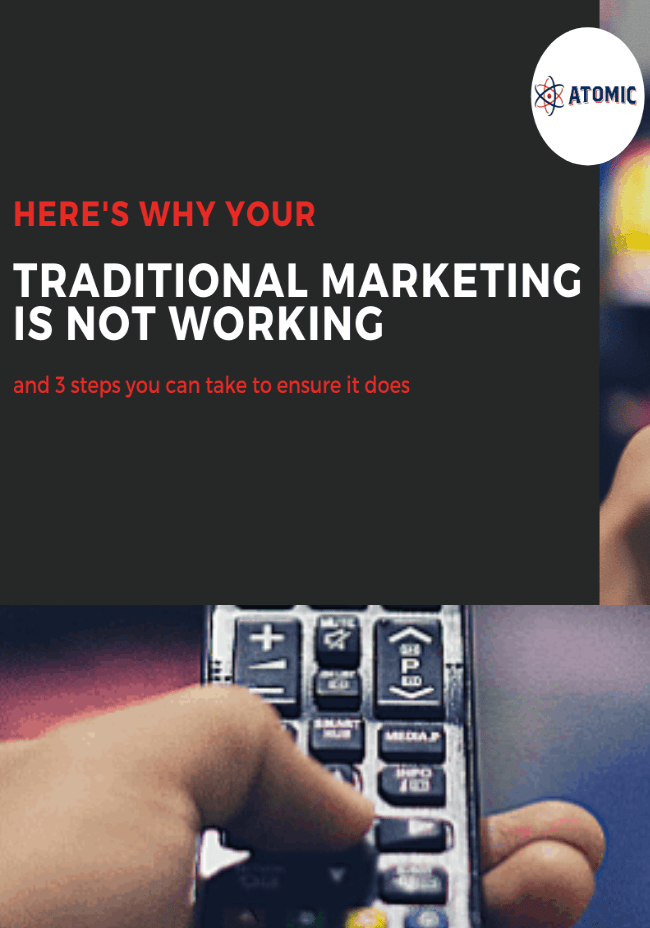How To: Social Marketing Basics
How To: Social Marketing Basics
BY ATOMIC | FEB 10, 2022


When you’re a business owner or individual trying to build your personal brand, being active on social media platforms is an essential step to establish credibility, boost awareness, and stay competitive.
It can feel overwhelming and tedious if you are new to social media marketing but don’t worry, I have you covered. I will briefly explain social marketing basics, provide some helpful tools, and walk you through social strategy so you can start posting right away! You’re welcome. 🙂
What is Social Marketing?
Before I get into creating a social strategy, I’ll answer your most pressing question: “What the heck is social marketing anyways?” Well, to put it simply, social media marketing is marketing your business or personal brand on social platforms through two strategies: Organic and paid social.
Organic Social
Organic social media involves using the free features that social platforms offer. Purely organic social involves no advertising spend or paid promotion. Snap a selfie and post it directly to your Instagram? That’s organic social. Don’t get it twisted, though, just because it’s free, doesn’t mean you shouldn’t take it seriously or fail to plan effectively. Organic social is great for building a dedicated and loyal following, so it’s crucial that you have ideas that set you apart. More on that later.
Paid Social
On the flip side, paid social involves using paid advertisements on social media with the goal of targeting specific audiences. So, when you’re scrolling through Facebook and you see a photo with the word “sponsored” in the corner, that’s paid social. Paid social is an entirely different game than organic social, so for this blog, I’ll be speaking from an organic perspective.
Creating a Social Strategy
Now that we’ve covered the introduction, let’s get into what you came here for; how to create a social strategy. Warning: I’m going to be blunt here. If you don’t have a strategy in place and you’re posting aimlessly just hoping someone will bite, you’re wasting your time. A good strategy will be created after answering these questions:
- What are my/my businesses goals?
- What are the specific tasks I need to complete in order to reach these goals?
- How will I measure my success?
“But, I’m not even sure what my goals are, and I sure as heck don’t know how to accomplish and measure them!” Here’s my big advice (courtesy of Mr. Gayle Rogers) to un-paralyze you: Just start. It doesn’t have to be perfect at first, heck it never will be perfect, but you also won’t have any success if you don’t begin at all. If you need a push, check out these goal examples in the following categories:
Service: Improving customer retention by ___%.
Social: Giving back to the community by [insert activity].
Profit: Increasing profits by ___% by [insert date].
Growth: Expanding the company by [insert tasks].
Now that your wheels are turning, it’s time to think about HOW to achieve your goals. Here is a starting point:
- Make them visible (Utilize a platform like Asana so they’re out in the open, there’s no room for out of sight, out of mind here.
- Create measurable and deadlined milestones. Wanting to increase your profits is great, but you’re setting yourself up for failure if you don’t have benchmarks and date goals in mind.
- Create projects and perform tasks that will help you reach said milestone.
Okay, now that you know what you want for your business, it’s time to create a social strategy. Let’s gooooooo! Here are the very basic, very initial steps.
1. Download These Helpful Tools
Canva (my personal favorite) is great for quick graphic designs and has a bazillion amazing features. If you’re not a graphic designer, no worries, because Canva has thousands of pre-made templates to choose from. Simply pop in your brand colors and you’ve got a neat design you can share with your audience. Canva offers both a free and paid version. I personally think the paid version is worth the cost, but the free version still has a ton of features.
Zoho Social or any scheduling platform (Semrush, Later, Planoly, etc.) keeps your social organized. If you create 5 Canva posts, you can then save them, go on to your scheduling platform, select the dates you want to post each, write your caption, and boom! You’ve got your social scheduled for the week, no phone reminders necessary!
Lightroom is a photo editing app, so when you take photos of your employees, office activities, or whatever you’re working on, you can go in and make adjustments so the photo is more pleasing to the eye and consistent on your social feeds.
2. Start a Blog & Create GOOD Content
There are many benefits to creating a blog for your business. Here are a few: Increase traffic to your website, convert traffic into leads, and provide your target audience with helpful information about or related to your business.
For social purposes, blogs can be broken up into multiple posts, sometimes spanning months before the topic is exhausted. So, if your blog is “10 Ways to Increase Productivity,” you can take each heading/way and break it up weekly, biweekly, or monthly.
As mentioned previously, you HAVE to create content that sets you apart from the rest. Of course, regular social content like client testimonials, an overview of services, and employee spotlights are great ways to advertise your business, however, you have to include your true personality and release the idea of sticking to the same old script and same old tricks. If you need some more inspiration to be you, Gayle wrote an awesome piece about it here. Check it out! I triple dog dare ya.
3. Focus on a Few Social Channels
If you’re just starting out on social, it can be overwhelming to understand all of the features. It’s best to focus in on a couple social channels that you know will benefit your business. Instagram, Facebook, and Linkedin are usually a safe bet. Twitter, TikTok, Pinterest, and YouTube can come later if you deem them necessary. All are powerful in different ways, and I don’t recommend discounting any of them, but it’s important to have a good understanding of the basics FIRST.
4. Create a Posting Schedule
Time to put that social media scheduler to work! Creating a posting schedule will be completely unique to your goals, but as a rule of thumb, it’s always best to post AT LEAST once a week, and no more than once per day on your social media to keep your audience engaged. If you need help remembering when to post, create a content calendar. Just remember: consistency and quality is key!
Speaking of keeping your audience engaged…always, always, always reply to comments and reposts/shares. By doing so, you’re validating that follower and encouraging them to continue to come to your page and support your business.
5. Review Analytics
After you’ve got your first social posts up, give them some time to run their course, and then take a look at the analytics. Compare the content you’re posting and take a look at what’s performing well. Analytics will vary on each platform, but you’ll want to look at the following: Likes, comments, shares, reach, impressions, content interactions, and profile activity.
**Pro-tip: You’ll need to have a business account on Instagram to view analytics and a business page for Facebook and LinkedIn. Click the platform for a tutorial if you need it.**
6. Adjust if Necessary
After reviewing your social analytics, keep track of what type of post is performing well so that you can create similar posts in the future, and keep track of the posts that aren’t performing as well so that you can create similar posts sparingly. However, before throwing out a post that doesn’t perform on the first run, try posting it or a similar post again, but at a different day and time. For an idea on posting times, click here.
And there you have it! Your very basic “create your own social media strategy steps.” I’ll leave you with a couple more helpful resources as you navigate your social media journey.
How to build a powerful social media strategy in 2022 (FREE TEMPLATE)
5 quick and easy steps to create a successful social media strategy
A quick guide to mastering social media algorithms







